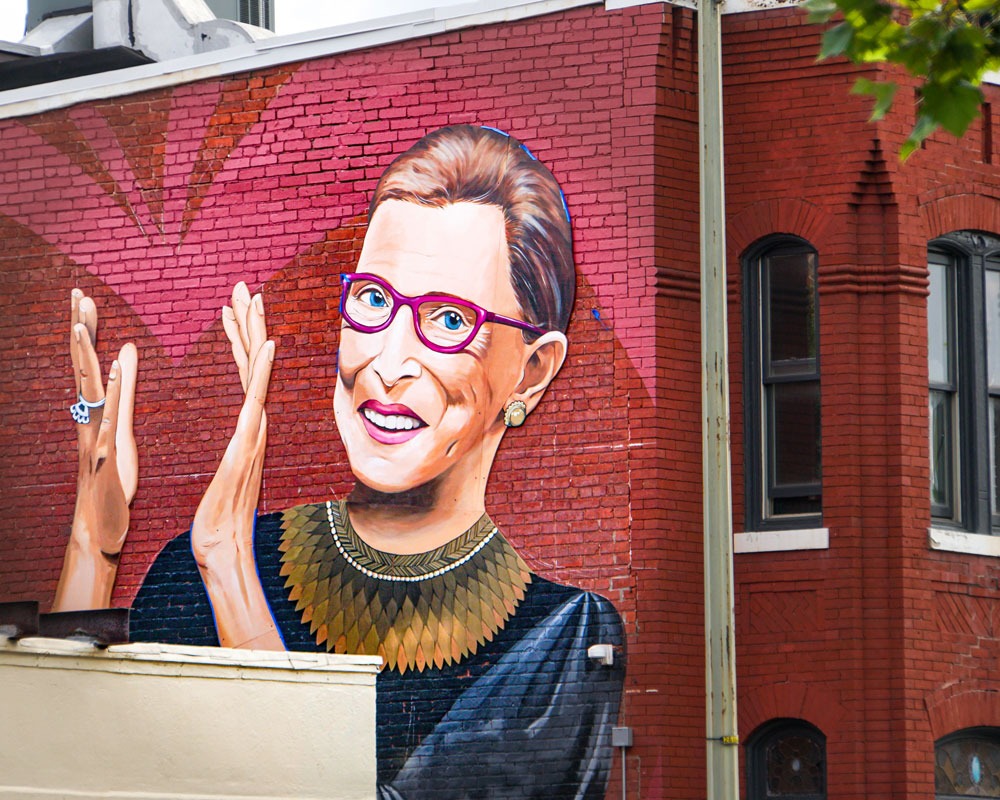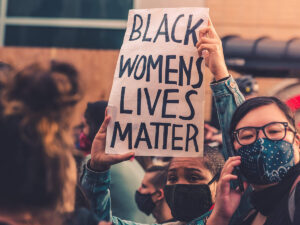
September 18, 2020; New York Times and Politico
Last Friday evening, US Supreme Court Justice Ruth Bader Ginsburg, who had faced a number of bouts with cancer over past decades, succumbed to a metastasized pancreatic cancer and breathed her last breath. She was 87.
Certainly, in the coming days and weeks, there will be intense struggle over how to fill the vacated slot of one of the most impactful justices in US Supreme Court history—indeed, the political positioning has already begun. We will surely cover these developments here at NPQ. But today it seems appropriate to focus not on the consequences of her passing, but the accomplishments of her life, and in particular how Ginsburg and her work interacted with what we at NPQ like to call civil society—that is, the layer of associational life that lives between individuals and the state. This seems particularly important in a time like our own, a period marked by both rising social movements and increasingly obvious risks to basic democratic norms.
There is a tendency, particularly in obituaries, to celebrate the individual and ignore the social movements without which individual successes would have been impossible.
This is not to deny the vital role Ginsburg played in women’s rights litigation, one that leads Politico to call her “the most important woman lawyer in the history of the republic.” Ginsburg graduated top of her class at Columbia Law School in 1959, but there was not a single law firm in New York City that deigned to hire her; she chose academia and legal activism instead.
As Linda Greenhouse writes in the New York Times, Ginsburg, who in 1972 became the first director of the Women’s Rights Project of the American Civil Liberties Union, was a master legal strategist who helped persuade an “all-male Supreme Court, one case at a time, to start recognizing the constitutional barrier against discrimination on the basis of sex.” In this, Greenhouse notes, Ginsburg was not unlike Thurgood Marshall, who, as NAACP counsel, “had done much the same as the civil rights movement’s chief legal strategist in building the case against racial segregation.”
Sign up for our free newsletters
Subscribe to NPQ's newsletters to have our top stories delivered directly to your inbox.
By signing up, you agree to our privacy policy and terms of use, and to receive messages from NPQ and our partners.
Yet Ginsburg was not confused about the interplay of social movements, civil society, and the law. As Greenhouse writes, “Asked often to explain the success of her 1970s litigation campaign, Justice Ginsburg usually offered some version of having been in the right place with the right arguments at the right time.”
In the preface to My Own Words, a compilation of her writing published in 2016, Ginsburg noted that her success only occurred because, “for the first time in US history, it became possible to urge, successfully, before legislatures and courts, the equal-citizenship stature of women and men as a fundamental constitutional principle.”
As a justice on the Supreme Court, Ginsburg had many notable achievements. Her 1996 majority opinion in Virginia v. the United States, holding that the state-run Virginia Military Institute must admit women as well as men, is often cited as one of her most foundational legal opinions. A decade later, in Ledbetter v. Goodyear, decided in 2007, Ginsburg’s dissent—calling out the absurdity of having the statute of limitations on gender-based pay discrimination run out before an employee was even aware that the discrimination had occurred—led to widespread public outcry and the passage of the Lilly Ledbetter Fair Pay Act in January 2009.
Yet it was only in recent years that Ginsburg became the outsized figure known as the “Notorious RBG” and was widely celebrated in popular culture. The case that led Ginsburg to this unusual status was not a women’s rights case, but instead was her dissent in a highly prominent voting rights case known as Shelby County v. Holder, a US Supreme Court decision that eviscerated the 1965 Voting Rights Act. Between 1982 and 2006, the provisions of the Voting Rights Act that would be stripped out of federal law by the Shelby decision had enabled the US Department of Justice (DOJ) to block over 700 changes to state and local election voting laws deemed to violate civil rights standards. Nevertheless, the Supreme Court majority contended that the protections were no longer needed. After Shelby, the DOJ could only sue after the fact—and voter suppression proliferated.
Ginsburg had predicted this exact outcome back in 2013. In her dissent she noted, citing Dr. Martin Luther King Jr., that “the arc of the moral universe is long, but it bends toward justice”—but only if, Ginsburg added, “there is a steadfast commitment to see the task through to completion.”
The Shelby decision, of course, destroyed that commitment. Today, seven years later, we are living with the consequences. One consistent theme we can draw from Ginsburg’s life, however, is her insistence on carrying forth in the struggle—whether in the majority or the minority, whether in good times or bad. It is a message that may be an important reminder to us all.—Steve Dubb













